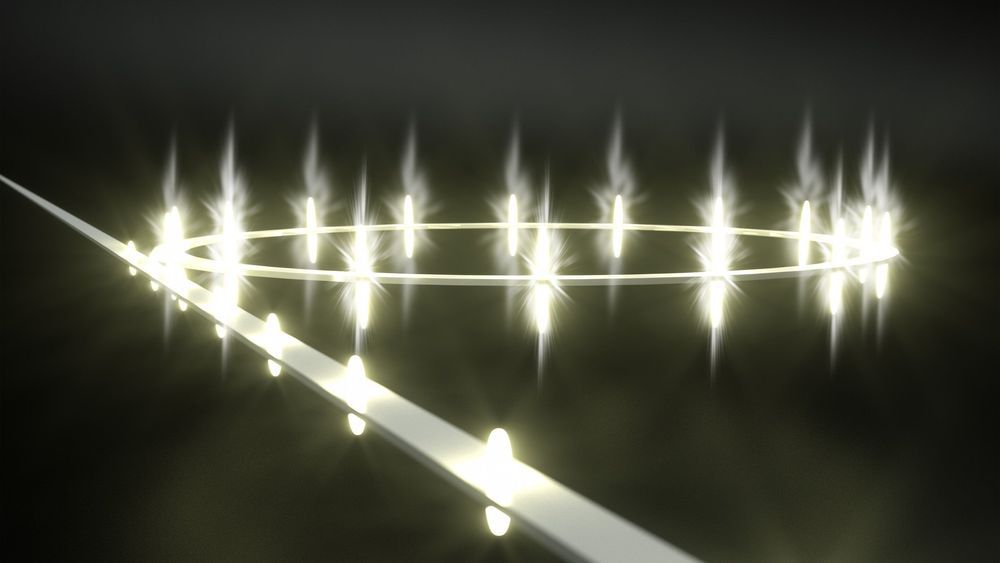Optical microresonators convert laser light into ultrashort pulses travelling around the resonator’s circumference. These pulses, called “dissipative Kerr solitons,” can propagate in the microresonator maintaining their shape.
When solitons exit the microresonator, the output light takes the form of a pulse train—a series of repeating pulses with fixed intervals. In this case, the repetition rate of the pulses is determined by the microresonator size. Smaller sizes enable pulse trains with high repetition rates, reaching hundreds of gigahertz in frequency. These can be used to boost the performance of optical communication links or become a core technology for ultrafast LiDAR with sub-micron precision.
Exciting though it is, this technology suffers from what scientists call “light-bending losses”—loss of light caused by structural bends in its path. A well-known problem in fiber optics, light-bending loss also means that the size of microresonators cannot drop below a few tens of microns. This therefore limits the maximum repetition rates we can achieve for pulses.









Comments are closed.